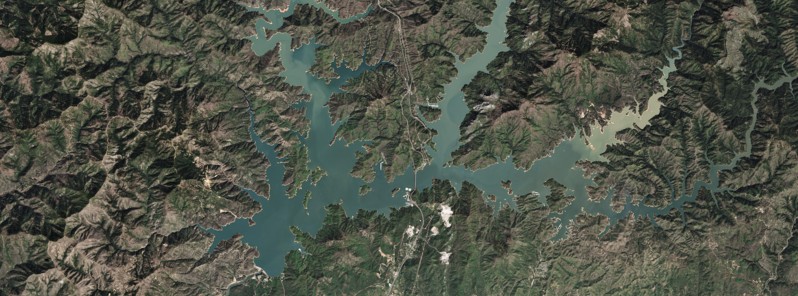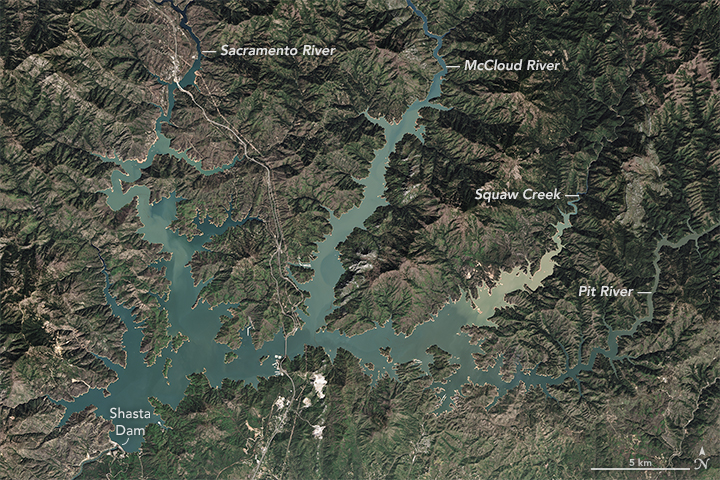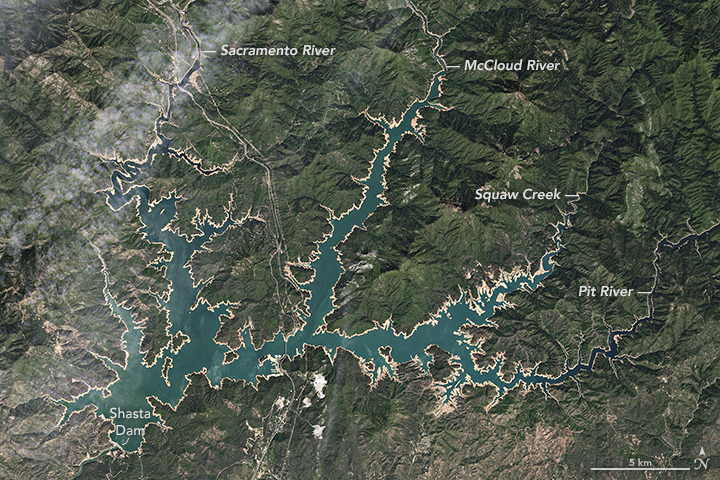Shasta Lake water levels recovered after 4 years of extreme drought, California

After four years of extreme drought, the largest water reservoir in California – Shasta Lake – has recovered and now holds 109% of its long-term average supply for this time of year.
Shasta Lake has stood as a potent symbol of the water shortage during those four years of drought. By December 2015, the lake dropped to just 29% of its capacity and its water levels stood more than 30.5 m (100 feet) below normal.

The amount of water in Shasta Lake has tripled since December, and the lake level has risen 40.8 m (134 feet). All that due to heavy rains in February and March.
As of March 29, the 34-km (21 miles) long reservoir held 4.004 million acre-feet of water, well above the historical average of 3.668 million acre-feet (maf). The amount of water in Shasta Lake has tripled since December, and the lake level has risen 40.8 m (134 feet). As recently as February 29, water storage stood at 2.766 maf (83% of average); at maximum capacity, the lake holds 4.5 maf.
Today on CDFA's Planting Seeds blog, “Then and now” photos of Shasta Lake – https://t.co/XbQET651JB pic.twitter.com/cKLHhc88sR
— Calif Food and Ag (@CDFAnews) March 30, 2016
The second largest reservoir, Oroville, reached 69% of capacity (96% of historical average) in mid-March. Managers of Shasta and Oroville actually had to release some water through flood control systems due to heavy rain in late February and early March; that has not happened in five years.

Shasta Lake on March 30, 2016. Credits: NASA Earth Observatory images by Joshua Stevens, using Landsat data from the U.S. Geological Survey and water level data from the California Department of Water Resources. Caption by Michael Carlowicz.

Shasta Lake on April 13, 2015. Credits: NASA Earth Observatory images by Joshua Stevens, using Landsat data from the U.S. Geological Survey and water level data from the California Department of Water Resources. Caption by Michael Carlowicz.
However, while northern reservoirs appear to be in very good shape now, water resource managers and researchers cautioned that total water storage across the state is still below average and groundwater supplies have been severely depleted due to pumping during the drought.
“The unevenness of the precipitation is some concern, and the depth of remaining surface and subsurface storage drawdown from the drought remains sizable,” wrote University of California–Davis scientist Jay Lund on the California WaterBlog. “Overall, total surface storage in California is about 2.7 million acre-feet below average for this time of year (improved from an 8 maf surface storage deficit in October).”
“The drought by 2015 depleted total storage in California by about 22 maf cumulatively or nearly a year’s worth of water use in agriculture,” Lund added. “Storage is recovering during this wet season, but still has a good bit to go—probably 12–16 maf of drought storage drawdown remains, mostly from groundwater.” (EO)
Featured image credit: USGS / Landsat-8

Commenting rules and guidelines
We value the thoughts and opinions of our readers and welcome healthy discussions on our website. In order to maintain a respectful and positive community, we ask that all commenters follow these rules.